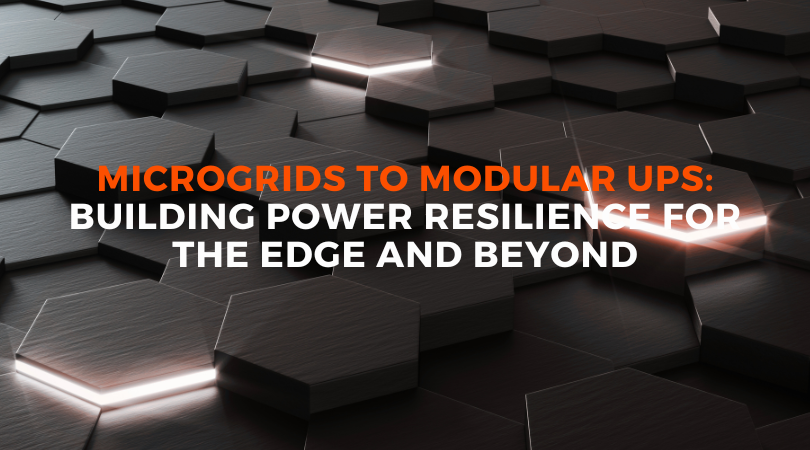For years, the conversation around data center power has focused on large, centralized facilities. And while those core sites are still critical, the game is changing. Data isn’t just moving through the core anymore. It’s being created and used at the edge: in smart factories, city centers, retail stores, and remote locations.
This shift isn’t just about speed. It calls for a new way of thinking about how we power these critical sites. Relying on a single grid connection at each location is a major risk. It’s like trying to supply a growing city with just one main water pipe. If that pipe goes down, everything stops.
What’s Needed Now: Smarter, Distributed Power
We’re not here to admire the problem. We’re here to solve it. The answer starts with local energy independence and power systems that scale with demand.
Microgrids: Local Energy That Doesn’t Blink
A microgrid is more than backup. It’s control. Think of it as your own onsite utility that can run in parallel with or independently from the grid.
Resilience by design. When the main grid goes down, your operation stays online. The microgrid isolates from the failure and keeps critical systems running. No scrambling. No shutdowns.
Smarter energy management. Microgrids bring together solar, storage, generators, and more. They automatically balance resources to minimize cost and optimize performance.
Progress that’s measurable. Adding renewables isn’t just good for sustainability goals. It reduces reliance on fossil fuels and helps future-proof your power strategy.
Cost stability. When you generate and manage your own power, you’re less exposed to utility rate volatility. That means predictable operating costs and better budget control.
Modular UPS: Scalable Power That Fits the Moment
Microgrids give you the ability to generate local energy. Modular UPS ensures that energy is clean, stable, and always available at the point of need.
Legacy UPS systems are often overbuilt or underpowered. They take up too much space, require costly upgrades, and struggle to keep up with change. Modular UPS fixes that.
Power that grows with you. As needs evolve, you simply add modules. There’s no need to overbuild upfront or rip and replace down the road.
Faster deployment. Modular units arrive pre-tested and ready to install. That shortens project timelines and accelerates edge deployment.
Easier maintenance. If a module goes offline, it’s swapped out quickly. There’s no single point of failure, and no need for extended downtime.
Built-in redundancy. Need N+1? Add a module. Need N+2? Add another. It’s simple, scalable protection, especially important for remote or unstaffed sites.
The Future of Power Isn’t Bigger. It’s Smarter.
AI, automation, and IoT aren’t slowing down. If anything, they’re speeding up. And they’re putting new pressure on infrastructure to be more distributed, more adaptive, and more resilient.
That means power strategies need to shift. From centralized to local. From rigid to flexible. From reactive to proactive.
Let’s build a smarter, more resilient infrastructure together. Contact Donwil to get started.

